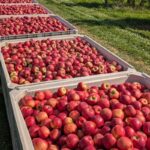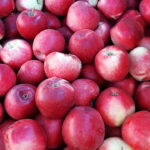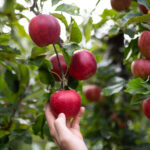Chilean producers crushed by second consecutive year of frosts

Update: Since Ruiz-Tagle's comments were published, a variety Chilean Fruit Exporters Association (ASOEX) has issued a statement clarifying what the total damage may potentially be industry-wide.
Lightning seems to have struck twice in Chile as frosts last week devastated crops in some southern growing regions, with one large producer estimating between 30-100% crop loss for fruits including kiwifruit, blueberries, cherries and apples. 
The poor weather came roughly one year after severe frosts wreaked havoc on almost the entire Chilean agricultural industry.
Producer and exporter Special T co-owner Gonzalo Ruiz-Tagle told www.freshfruitportal.com frosts that occurred between Oct. 8-9 damaged crop production across roughly a 250-mile stretch between Molina in the VII region and Temuco in the IX region.
"From my understanding, and from what I have seen on my farms, blueberry losses are at around 70%, mainly for the varieties O´Neal, Brigitta, Cameillas, Duke, Star, Jewel, Legacy, and Brightwell, and to a lesser extent the later varieties," he said.
He said about 50% of Pink Lady apples had also been lost, along with 30% of cherries.
For kiwifruit the figure was somewhere between 80-100%.
"On the subject of blueberries, at least for me - and according to analysis carried out by grower associations - the losses will be over 10,000 metric tons [MT] and will affect production until January in these regions," Ruiz-Tagle said.
"For apples I still don't have all the information - we're currently working on that."
"This was completely unexpected - absolutely no one had predicted this. On October 9 it wasn't that cold - maybe -1,5°C to -2° [29°F to 28°F] to - but it lasted for hours, maybe three or four hours."
He said that during the day the weather had been sunny and windy, which had probably led to lower humidity which produced an effect known as 'black frost', damaging the plants.
After the cold weather Ruiz-Tagle immediately started assessing the damage, finishing a few days later on Tuesday (Oct. 14).
He concluded that over 60-mile stretch of land between Linares and Chillan there would likely have been crop losses of around 60-70%.
"I think that much of fruit still hasn't shown a lot of damage because it's still growing, unfortunately. Fruit that was bigger than about 8 millimeters will keep growing, but it will have a poor internal quality," Ruiz-Tagle said.
According to the Special T co-owner, some producers in the region did have frost protection systems, but they had not turned them on as the cold temperatures had not been anticipated.
He said he was particularly concerned for the 1,500-2000 smaller farmers in the regions who may well have lost everything, and probably wouldn't have had insurance like bigger producers.
Ruiz-Tagle also alleged that the authorities' response to the situation had thus far been inadequate, and he therefore wanted to spread the information to raise awareness.
Photo: www.shutterstock.com














































